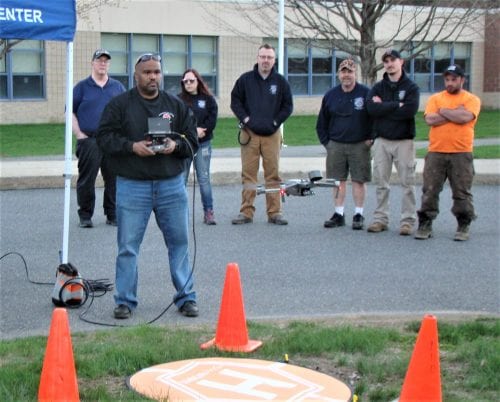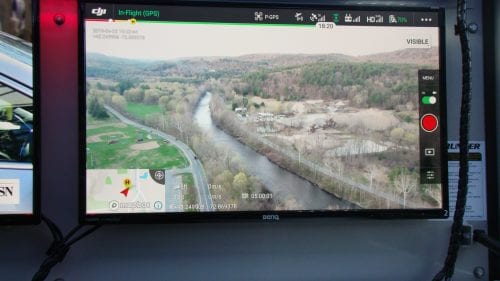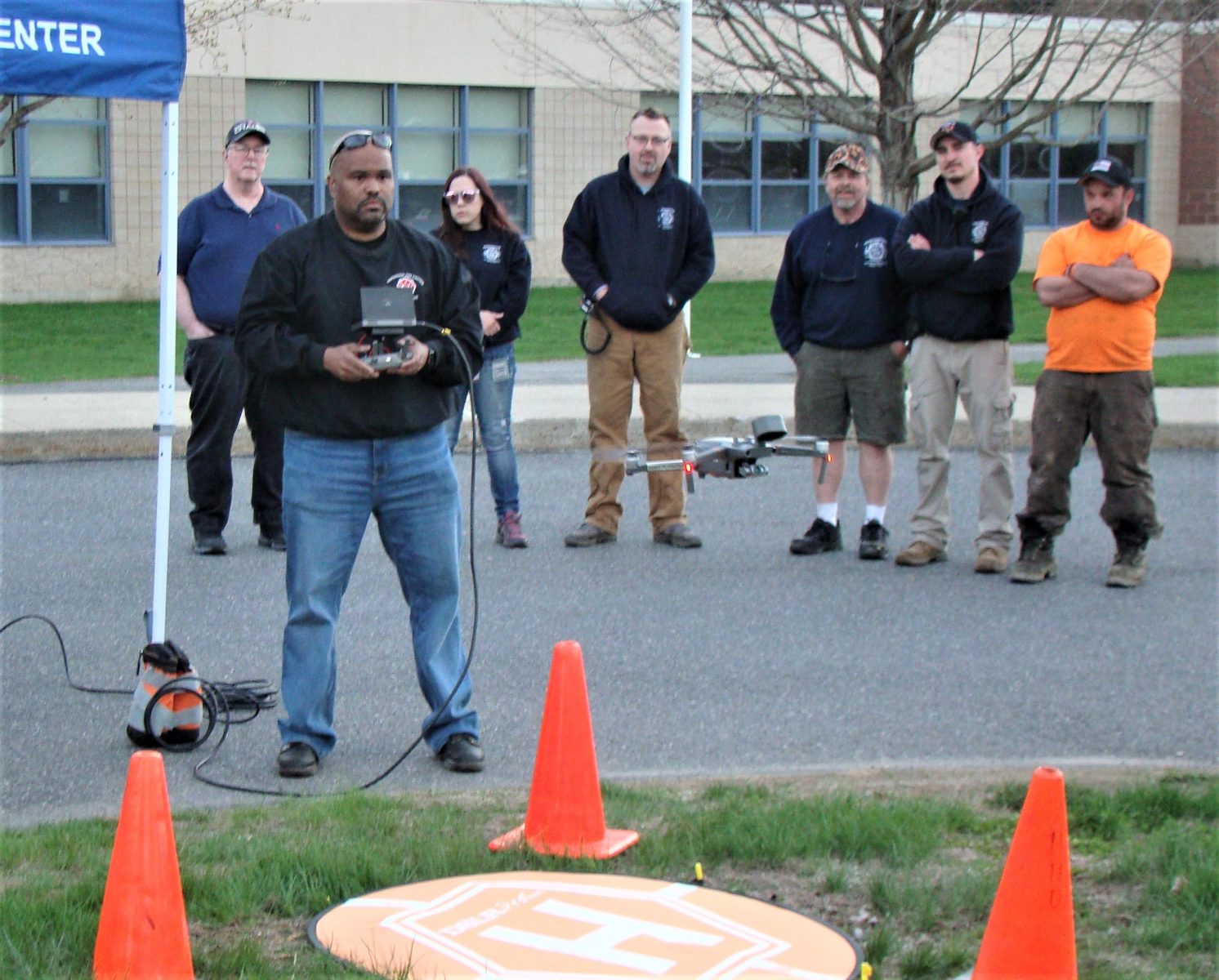
Huntington Emergency Management Director Dennis Nazzaro demonstrates the Mobile Command Pod Thursday to area emergency services personnel. (Photo by Amy Porter)
HUNTINGTON -Thursday evening, Huntington Emergency Management Director Dennis Nazzaro demonstrated a new public safety drone and WMLEC (Western Mass Law Enforcement Council) Mobile Command Pod to firefighters, police officers and town officials from Huntington, Blandford, Montgomery, and Westfield.
The town-owned drone, a DJI Mavic Enterprise Dual, was obtained two months ago through a grant of $3,200 from the Massachusetts Emergency Management Agency. Nazzaro said he sought the grant after an incident at the Chesterfield Gorge, where a man jumped in the river to save his dog, and couldn’t be found. Area responders searched on foot and asked for aerial backup, but no pilots were available for the only two drones in region. Nazzaro said they realized they needed something out in the hilltowns that they could get to right away.
The drone has already been used on a missing person case at Littleville Dam, during training at the Blandford Ski Patrol and when some roads in town became inaccessible due to muddy conditions.
The drone can be used in conjunction with the Mobile Command Pod, a regional emergency operations center housed in Huntington, that can be brought by trailer onsite, patch together local police, fire, highway and EMS radio dispatch signals, and show video from the drone on its screens. The command pod was purchased last year on a grant from the Western Region Homeland Security Advisory Council with funds received from the U.S. Department of Homeland Security.
Nazzaro said on Wednesday they also became connected to First Net, an emergency Wifi for the Command Center for areas where connections are jammed or not available. First Net is a federal unlimited internet for emergency services on Band 14, having been set up by AT&T. Nazzaro said the connection is not yet great in the hilltowns, but five more towers are expected to be built over the next year and a half.

Westfield Firefighter Randy Quarles was drone pilot for the demonstration. (Photo by Amy Porter)
Nazzaro and Westfield firefighter Randy Quarles, both licensed FAA drone pilots did the demonstration on Thursday. He said to operate a drone for commercial purposes, which includes public safety, an FAA license is required. The drone must also be used with a visual observer to track it, a job which also requires an FAA license. He said the FAA owns all air space above three feet.
Nazzaro said the drone is a regional asset for any town to use, but they must have a pilot, and encouraged local fire departments and emergency personnel to have someone trained, starting as a visual observer. He said it is a big commitment, because with the license, you have to have a certain number of flights and landings per month.
There are also a lot of rules with drones, including not being able to fly at night without a waiver. Nazzaro said he received a waiver for the entire area, because generally people get lost in the woods after dark.
The drone is equipped with a regular camera and a thermal imaging camera for night flying. It can go up to 400 feet, and out as far as is visible to the eye. At the demonstration, the drone took footage of the Westfield River next to the school, which was broadcast on the Mobile Command Pod.

Footage of the Westfield River from the drone was displayed on one of two monitors on the Mobile Command Post. (Photo by Amy Porter)
The drone also has a speaker with pre-recorded messages, including, “Help is on the way, please stay
where you are,” and a siren. Emergency personnel may also give commands directly into the drone.
Westfield Police Detective Todd Edwards, who was at the demonstration, said Westfield has its own drone program, but they are looking to get a secondary one to fly indoors during emergencies; such as in warehouses, or in schools.
Edwards, a licensed drone pilot, said Westfield has to get special waivers to fly close to the 8 mile FAA perimeter around Barnes Airport, and also to fly at night near an airport. Edwards said the city does not have anything like the mobile command pod, which they could have used when the tornado touched down.
Nazzaro said the drone and command pod may also be used for non-emergencies, such as parades and demonstrations.


